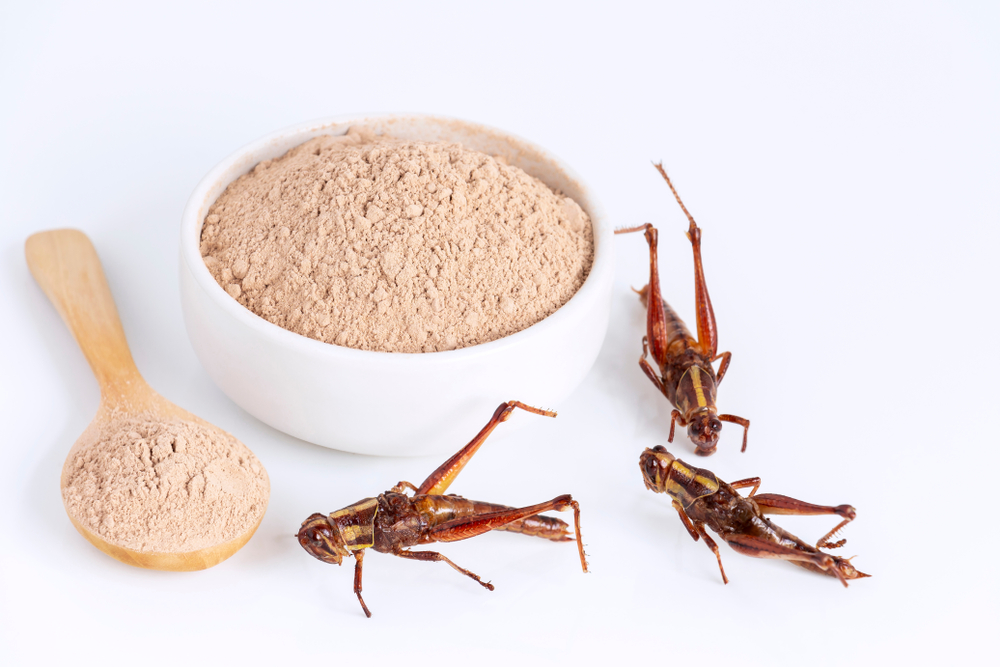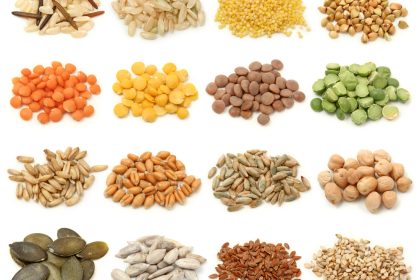That creepy-crawly feeling you get thinking about eating bugs? It might be time to get over it. While Western cultures still wrinkle their noses at insect protein, a quiet revolution is transforming our food system from the ground up. What was once considered a novelty or survival food is rapidly becoming recognized as an essential part of a sustainable future.
With global protein demands soaring and traditional animal agriculture straining planetary resources, insects offer a remarkably efficient alternative that’s already normal fare for about two billion people worldwide. The environmental math is simply undeniable—producing equivalent protein from insects versus cattle requires a fraction of the land, water, and feed while generating minimal greenhouse gases.
Let’s explore how insect protein is evolving from taboo to trendy, the fascinating science behind their nutritional and environmental benefits, and why your future protein shake might contain cricket powder without you even noticing the difference. The insect food revolution isn’t just coming—it’s already here and expanding in ways that might surprise even the most skeptical eaters.
The nutritional powerhouse hiding in plain sight
Insects pack a remarkable nutritional profile that often surpasses conventional protein sources through several distinct advantages that nutritional scientists have thoroughly documented.
Complete protein composition represents one of the most compelling aspects of edible insects. Many species provide all nine essential amino acids in proportions that rival or exceed beef and fish. Cricket protein, among the most commonly commercialized, contains approximately 60-70% protein by dry weight with an amino acid profile particularly rich in leucine and lysine—amino acids crucial for muscle maintenance and growth that are often limiting in plant proteins.
Micronutrient density distinguishes insects from many other protein alternatives. Mealworms contain roughly three times more zinc and copper than beef, while crickets provide more than double the iron. These minerals play critical roles in immune function, energy production, and cognitive health, making insect protein nutritionally superior to many plant-based protein alternatives that require supplementation to match conventional animal products.
Beneficial fat profiles characterize many edible insect species. Unlike conventional livestock, which typically contain primarily saturated fats, many insects provide favorable ratios of omega-3 to omega-6 fatty acids similar to fish. Black soldier fly larvae, for instance, contain alpha-linolenic acid (ALA) concentrations comparable to some fish species, potentially offering cardiovascular benefits without marine resource depletion.
Chitin content—the fibrous substance forming insect exoskeletons—provides prebiotic benefits that support gut microbiome health. This fiber-like compound selectively feeds beneficial gut bacteria that produce short-chain fatty acids supporting immune function and gut barrier integrity. Recent research suggests this prebiotic effect may partially explain the lower inflammatory disease rates in cultures with traditional insect consumption.
Vitamin B12, typically absent in plant foods, appears in nutritionally significant quantities in many insect species. This essential vitamin, crucial for nervous system function and blood cell formation, makes insect protein particularly valuable for addressing nutritional gaps in vegetarian and vegan diets without requiring synthetic supplementation.
The sustainability metrics that can’t be ignored
Beyond nutrition, the environmental efficiency of insect protein production creates compelling sustainability advantages through multiple resource conservation pathways.
Feed conversion ratios demonstrate insects’ remarkable efficiency. Crickets convert feed to edible protein approximately twice as efficiently as chickens, four times more efficiently than pigs, and nearly twelve times more efficiently than cattle. This efficiency translates directly to reduced land requirements for feed production—a critical factor as arable land becomes increasingly scarce globally.
Water footprint reductions represent another dramatic advantage. Producing one kilogram of cricket protein requires approximately 2,000 liters of water compared to 22,000 liters for the same protein quantity from beef. This 90% reduction becomes increasingly significant as water scarcity affects more agricultural regions globally.
Greenhouse gas emissions from insect production show equally impressive reductions. Mealworm protein production generates approximately 1% of the greenhouse gases per protein unit compared to beef production. This dramatic difference comes primarily from insects’ efficient metabolism and the absence of enteric fermentation that produces methane in ruminant livestock.
Space efficiency reaches almost science fiction levels. Insect farming’s vertical production potential means protein output per square meter can exceed conventional livestock by factors of 100-1000. This spatial efficiency makes insect protein particularly valuable for urban production systems where transportation emissions and costs currently impact food affordability and environmental impact.
Waste stream utilization creates circular economy benefits unique to insect production. Many commercial insect species thrive on organic byproducts and food waste streams that would otherwise require energy-intensive processing or contribute to landfill emissions. This waste conversion ability effectively transforms a climate liability into a protein asset while reducing disposal costs and emissions.
The industrial scaling happening rapidly
The insect protein industry has evolved beyond small experimental operations to sophisticated production systems attracting significant investment and technological innovation.
Automated production systems have transformed insect farming from labor-intensive operations to highly mechanized facilities more resembling microprocessor plants than traditional farms. These systems precisely control temperature, humidity, feeding schedules, and harvesting through integrated sensors and automation, creating consistent protein quality while drastically reducing labor costs that previously limited commercial viability.
Investment acceleration signals market confidence in the sector’s future. Global investment in insect protein companies exceeded $850 million in 2022 alone—more than the previous five years combined. This capital influx has enabled rapid expansion of production capacity, with several European facilities now producing over 10,000 metric tons of insect protein annually.
Processing innovation has dramatically improved product quality and application versatility. Advanced techniques like mechanical fractionation can now separate insect biomass into distinct protein, lipid, and chitin fractions with specific functional properties, enabling targeted use in various food applications from emulsification to texture enhancement.
Regulatory framework development has removed critical barriers to market expansion. The European Food Safety Authority’s approval of several insect species for human consumption in 2021 opened major markets previously restricted by regulatory uncertainty. Similar approvals in Canada, Australia, and parts of the United States have created clearer pathways to market that support large-scale investment.
Cost curve improvements follow predictable industrial scaling patterns. Production costs for cricket protein have declined approximately 30% annually since 2018 as operations scale and efficiencies improve. Industry analysts project price parity with conventional animal proteins for certain applications by 2026, potentially triggering more rapid adoption in mainstream food products.
The consumer adoption following distinct patterns
Rather than waiting for widespread cultural acceptance of whole insects, the industry has developed strategic approaches to overcome psychological barriers through several parallel strategies.
Ingredient incorporation rather than whole insect presentation represents the dominant commercial strategy in Western markets. By processing insects into powders, flours, or extracted proteins, manufacturers bypass the visual and psychological barriers that whole insects present. This approach aligns with how most consumers already consume conventional protein—as ingredients rather than recognizable animals.
Nutritional positioning targets performance-focused early adopters more receptive to novel protein sources. The sports nutrition segment has shown particularly strong acceptance of insect proteins, with consumers prioritizing functional benefits over conventional food traditions. This market entry strategy mirrors successful patterns from other novel foods like plant-based proteins and algae supplements.
Taste profile development has advanced significantly beyond early products. Current insect protein ingredients feature greatly reduced “earthy” notes through improved processing techniques and strategic masking with complementary flavors. Blind taste tests now regularly show consumers unable to identify insect-derived ingredients in properly formulated products, removing a significant adoption barrier.
Cultural bridge demographics—particularly younger consumers with environmental concerns and multicultural exposure—show significantly higher acceptance rates for insect proteins. Marketing strategies explicitly targeting these demographic segments has proven more successful than broad consumer approaches, creating adoption beachheads that gradually influence wider social norms.
Premiumization represents a counterintuitive but effective strategy for some insect products. Positioning insect ingredients as premium, sustainable alternatives rather than economy options helps overcome the “poverty food” association that creates resistance in affluent markets. This approach parallels successful strategies from foods like quinoa and açai that transitioned from obscurity to premium status.
The global traditions we’ve been ignoring
While Western cultures view entomophagy—insect consumption—as novel, long-established culinary traditions provide valuable insights for modern adoption and application.
Regional preparation expertise developed over centuries offers sophisticated techniques for enhancing insect protein palatability and nutritional value. Mexican culinary traditions, for instance, include toasting techniques for chapulines (grasshoppers) that enhance flavor compounds through Maillard reactions similar to those prized in grilled meats. These traditional techniques inform modern processing methods for optimizing sensory qualities.
Culinary integration patterns from insect-consuming cultures demonstrate successful ways to incorporate insects into familiar food formats. Thai cuisine’s integration of insects into familiar stir-fry dishes provides templates for incorporating novel proteins without requiring complete dietary pattern changes. These integration approaches influence current product development strategies focusing on familiar formats rather than novel food types.
Seasonal harvest traditions surrounding insects in many cultures address both ecological sustainability and peak nutritional value. Japanese traditions around seasonal hachinoko (wasp larvae) consumption coincide with optimal nutritional composition, while harvest timing helps maintain sustainable populations. These traditional ecological knowledge systems inform modern production timing and sustainability practices.
Texture application expertise in traditional insect cuisine offers insights for modern product development. South African culinary uses of mopane worms as “meat extenders” in traditional dishes leverage the protein’s unique texture properties in ways that modern food scientists now emulate for hybrid protein products combining insect and plant proteins for improved mouthfeel.
Fermentation applications for insects in traditional Asian cuisines create both preservation methods and flavor development pathways that modern food technology is beginning to explore. Korean traditional preparation of beondegi (silkworm pupae) includes fermentation techniques that both preserve the protein and develop umami compounds that enhance palatability—processes now being studied for industrial application.
The product categories gaining traction
Insect protein has found particular success in specific product categories where its functional properties or sustainability narrative creates distinctive advantages.
High-protein snacks represent the fastest-growing insect product category, with global sales increasing approximately 45% annually since 2019. Products like cricket protein bars and savory snacks benefit from the complete protein profile of insect ingredients while their processed format overcomes visual barriers. This category success demonstrates the effectiveness of fitting novel proteins into familiar, convenient consumption patterns.
Flour and baking applications leverage insects’ mild flavor when incorporated at moderate percentages. Cricket flour incorporation at 5-15% in baked goods provides substantial protein enrichment with minimal sensory impact. This application’s success comes partly from the cognitive distance between the ingredient and its source—few consumers visualize insects when consuming baked goods compared to meat analogues where visual comparison is direct.
Meat extension and hybrid products represent a rapidly expanding application area. Combining insect proteins with plant proteins creates meat alternatives with improved amino acid profiles and functional properties compared to solely plant-based products. This category benefits from both the sustainability narrative of reducing conventional meat consumption and the nutritional advantages of insect protein over purely plant-based alternatives.
Sports nutrition formulations increasingly incorporate insect proteins as functionality-focused consumers prove more receptive to novel ingredients. Products typically emphasize performance benefits and environmental sustainability rather than the protein source itself. This category’s growth demonstrates how functional benefits can override cultural food taboos when marketing emphasizes results rather than ingredients.
Pet food applications have shown perhaps the most rapid commercial adoption. The pet food industry’s projected use of insect protein is expected to exceed human food applications for at least the next decade. This market provides both significant volume for scaling production economics and a pathway to normalize insect protein in adjacent human markets as pet owners become familiar with the ingredient category.
The processing technologies enabling acceptance
Sophisticated processing methods have transformed raw insects into versatile ingredients that overcome both technical limitations and psychological barriers.
Mechanical fractionation technologies now separate insect biomass into distinct protein, lipid, and chitin fractions with specific functional properties. This separation enables targeted ingredient applications—protein isolates for nutritional enrichment, lipid fractions for functional food applications, and chitin derivatives for everything from food preservatives to biodegradable packaging. This fractionation mirrors processes used for conventional proteins like milk and eggs.
Flavor neutralization techniques have advanced significantly through enzymatic treatment processes that specifically target compounds responsible for insect protein’s distinctive flavor notes. These processes selectively modify flavor-active compounds while preserving nutritional integrity, resulting in highly neutral protein ingredients suitable for diverse applications.
Texturization processes adapted from conventional protein processing create insect protein ingredients with specific functional properties. Extrusion technology can transform insect protein into fibrous structures mimicking meat texture, while spray drying creates highly dispersible protein powders for beverage applications. These processes leverage insects’ unique protein composition to create functional properties difficult to achieve with plant proteins alone.
Allergen management protocols address potential cross-reactivity concerns, particularly for individuals with shellfish allergies due to similar chitin compounds. Processing techniques including specific enzymatic treatments can now reduce potential allergenicity while maintaining protein functionality. These protocols have enabled regulatory approvals with appropriate labeling requirements rather than prohibitions.
Shelf stability enhancement through both processing and packaging innovations has extended insect protein ingredient viability for commercial applications. Specialized drying techniques maintain protein quality while inhibiting lipid oxidation that previously limited shelf life. These improvements address critical practical barriers to commercial adoption by food manufacturers requiring consistent ingredient performance throughout typical product lifecycles.
The research frontiers expanding possibilities
Beyond current commercial applications, active research continues expanding insect protein’s potential through several promising directions.
Precision fermentation of insect-derived proteins represents an emerging frontier where specific insect protein genes are expressed in microbial systems rather than raising actual insects. This approach could potentially combine insects’ superior amino acid profiles with the scaling advantages of fermentation technology, creating novel hybrid production systems with advantages over both traditional insect farming and conventional fermentation.
Bioactive compound identification continues revealing functional components beyond basic nutrition. Research has identified specific peptides in black soldier fly larvae with antimicrobial properties potentially applicable as natural food preservatives. Similar investigations into cricket-derived chitosan derivatives show promising prebiotic properties that could create functional food applications beyond basic nutrition.
Circular economy integration research explores systematic incorporation of insect production into broader agricultural and food processing systems. Projects in Finland have demonstrated viable systems where food production byproducts feed insect production, which then produces both human food and fertilizer components that return to agricultural production. These integrated systems demonstrate regenerative rather than merely sustainable potential.
Genetic resource preservation takes on increasing importance as wild insect populations decline globally. Research programs documenting and preserving genetic diversity in edible insect species create resilience against both production challenges and climate adaptation needs. This genetic conservation parallels similar efforts in conventional agriculture but addresses a vastly more diverse genetic resource that remains largely undocumented.
Environmental impact quantification through comprehensive life cycle assessment continues refining our understanding of insect protein’s sustainability advantages. Recent research demonstrates that different production systems and feed sources create significantly different environmental profiles, allowing producers to optimize for specific environmental priorities beyond simple feed conversion efficiency.
The rise of insect protein represents a fascinating convergence of ancient food traditions and cutting-edge food technology—a rare case where looking backward and forward simultaneously creates viable solutions to contemporary challenges. While cultural barriers remain in Western societies, the combination of environmental necessity, nutritional advantages, and technological innovation creates powerful momentum toward broader adoption.
The most likely path forward involves continued stealth integration into familiar products rather than revolutionary dietary changes. Most consumers will likely experience insect protein first through ingredients in products they already consume, gradually normalizing the concept before more direct applications gain acceptance.
Perhaps most importantly, insect protein reminds us that our food prejudices often reflect cultural conditioning rather than rational assessment of nutritional, environmental, or even sensory merits. As climate pressures intensify and protein demands grow, the ability to overcome these psychological barriers may prove as important as any technological breakthrough in creating truly sustainable food systems.
Whether you find yourself eagerly sampling cricket protein bars or still hesitant about insect-derived ingredients, the sector’s growth trajectory suggests that insect protein will likely play an increasingly significant role in global food systems—invisible or not—in the coming decade.
















